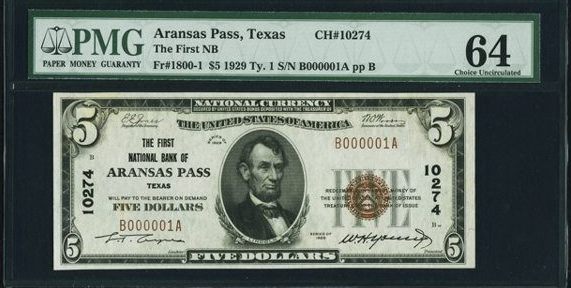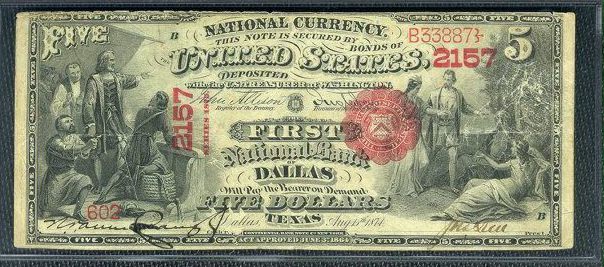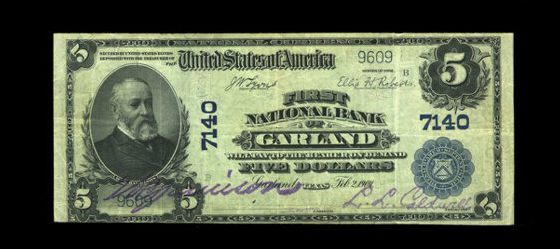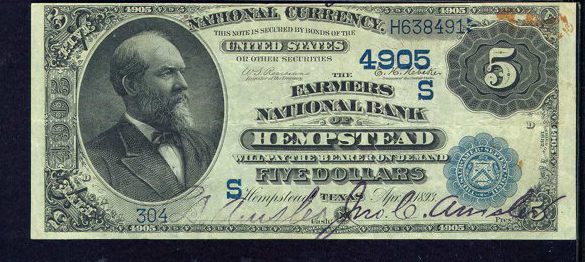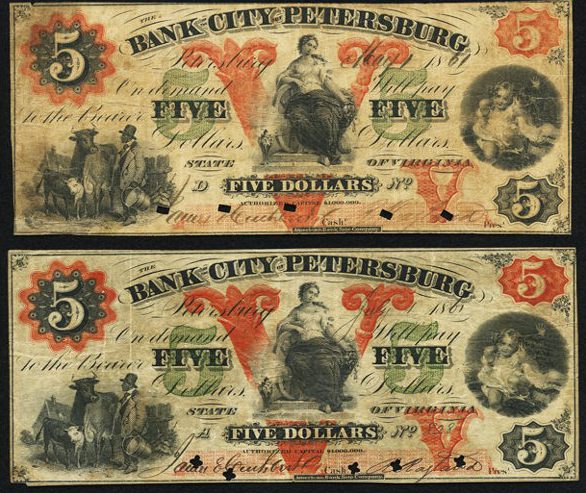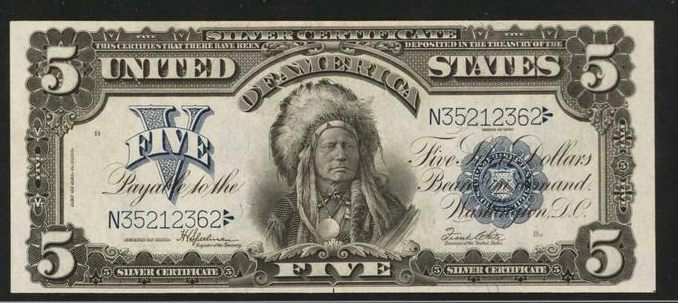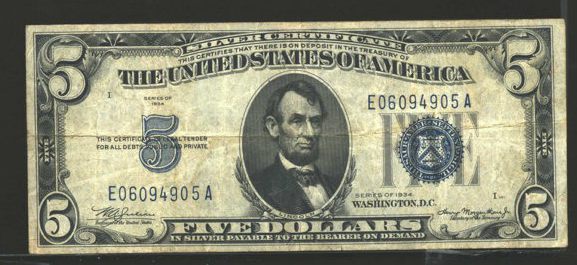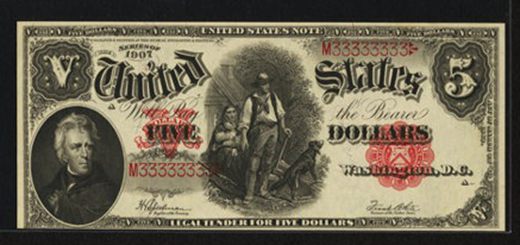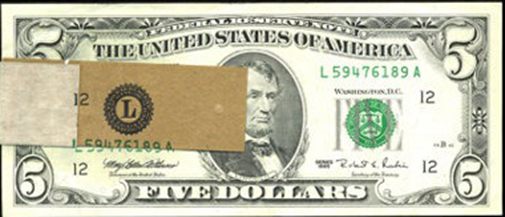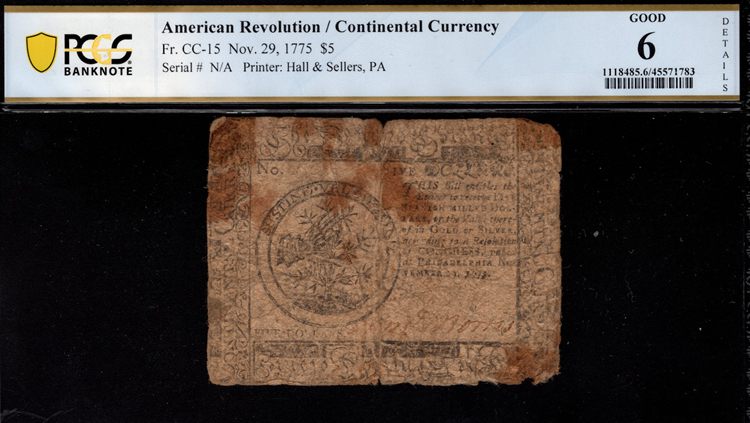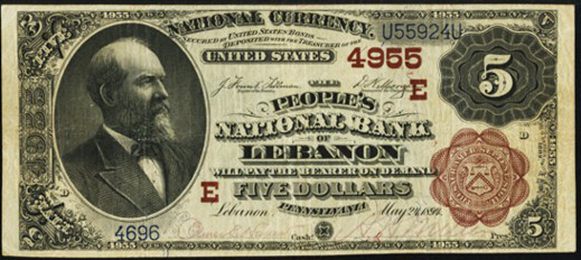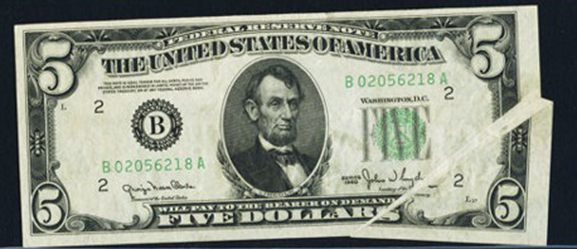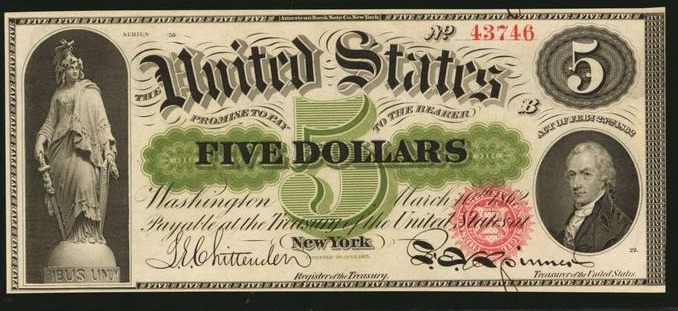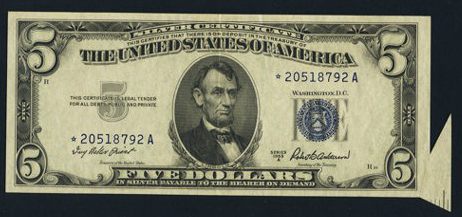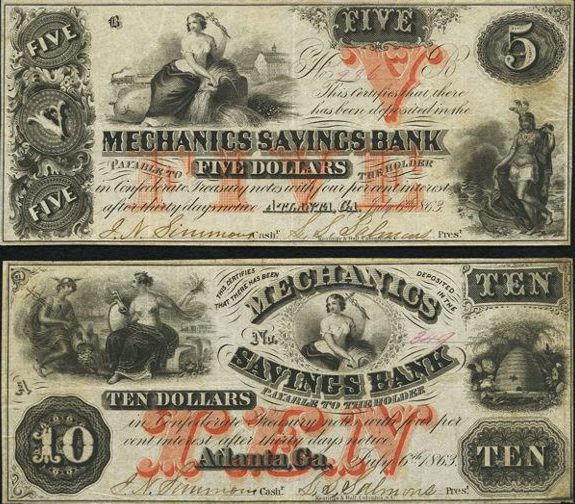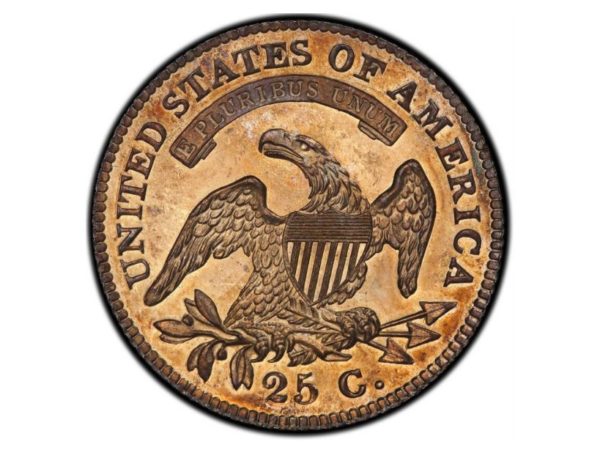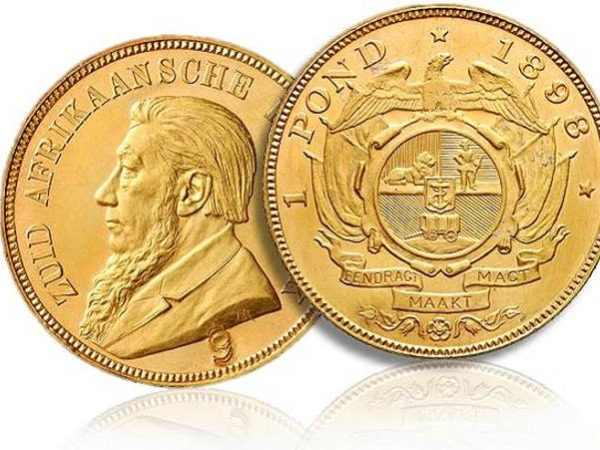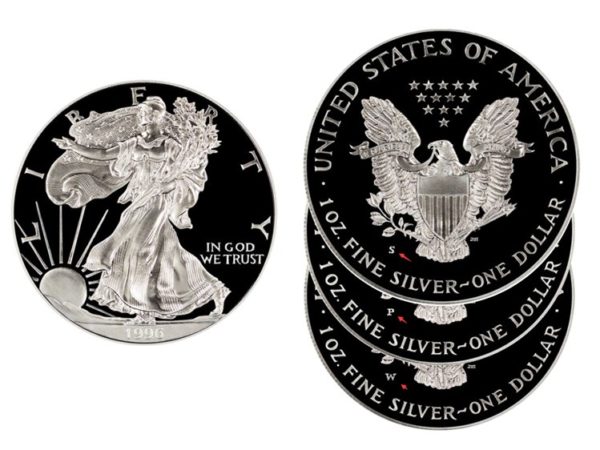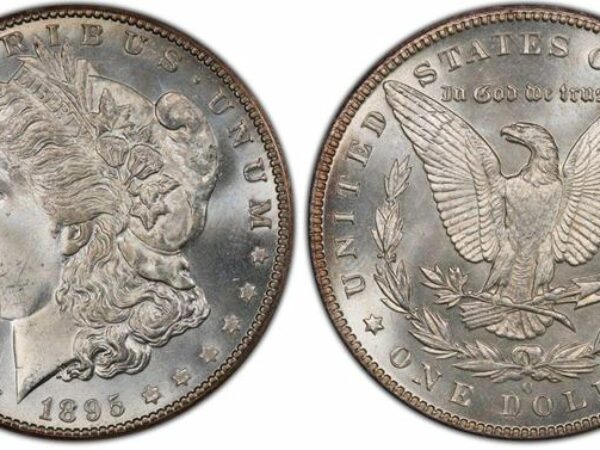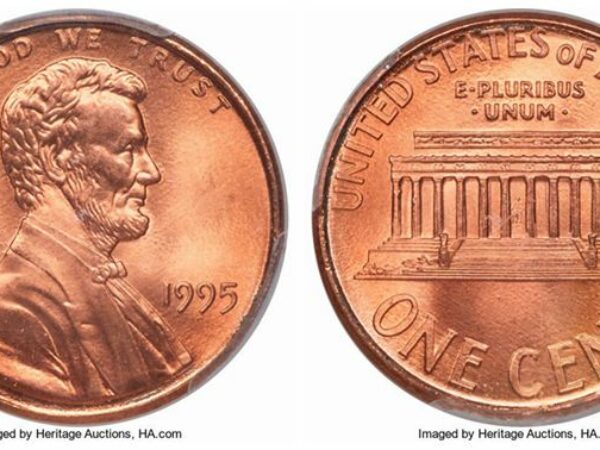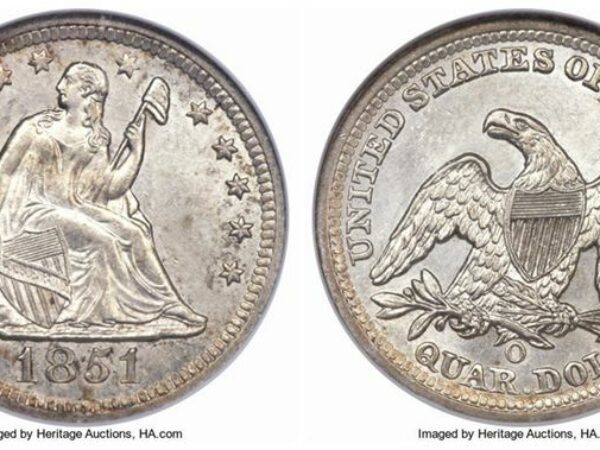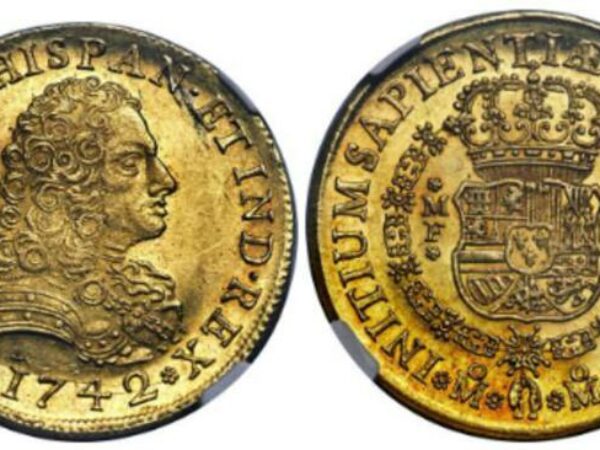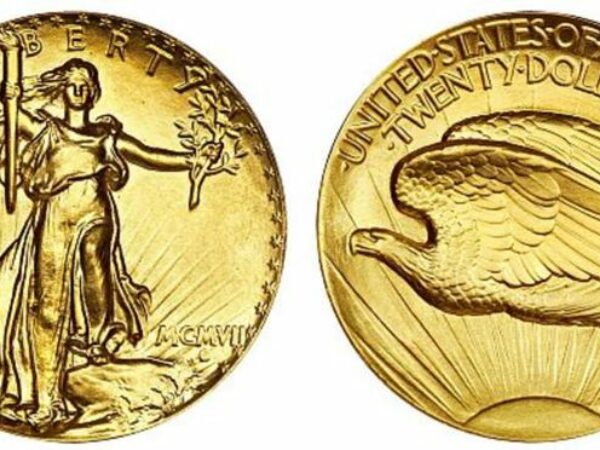It was called the Fin in the old days. And if you live on US soil, you likely have one in your wallet as you read this article. $5 bills made about 6% of the paper currency printed in the US in 2009.
The first five-dollar bill was printed in 1861 during the American civil war. It was called a demand note for this reason. Since then, five dollar bills have morphed from large size notes to small-size notes with design feature changes.
The five-dollar note looks different today, it has the image of Lincoln on it and is smaller in size than the one from 1861. If you are familiar with currency sales you must wonder if that peculiar looking $5 in your wallet could be worth something.
In this article, we present 15 rare and most valuable $5 bills that were sold. After going through this article you will have a vast idea of how much yours may be worth.
Table of Contents
15 Rare And Most Valuable 5 Dollar Bills: List
No |
Year |
Name |
Grade |
Price |
1 |
1929 |
First National Bank of Aransas Pass, TX. |
Uncirculated 64 |
$3,360 |
2 |
1875 |
First National Bank of Dallas, TX, |
VG-Fine |
$8,165 |
3 |
1902 |
National Bank of Garland, Texas |
Fine-Very-Fine |
$1,380 |
4 |
1882 |
Farmers National Bank of Hempstead, Texas |
Very Good 8 |
$4,140 |
5 |
1861 |
Petersburg, VA- Bank of the City of Petersburg |
Very Fine |
$240 |
6 |
1899 |
$5 Silver Certificate |
Gem New 65 |
$5,400 |
7 |
1934 |
$5 Silver Certificate |
MS 64 |
$402 |
8 |
1907 |
$5 1907 Legal Tender |
New 62 |
$11,500 |
9 |
1985 |
Series 1985-L 1995 $5 Federal Reserve Error Note |
AU 58 |
$4,312.50 |
10 |
1775 |
Continental Currency $5 Note |
PCGS 6 |
$145 |
11 |
1882 |
Lebanon $5 Brown Back, The Peoples |
VF 25 |
$444 |
12 |
1950 |
$5 1950 Gutter Fold Error Federal Reserve Bank Note |
About New 55 |
$228 |
13 |
1862 |
$5 Legal Tender Note |
Uncirculated 55 |
$2,040 |
14 |
1953 |
Silver Certificate |
Choice AU 58 |
$258.50 |
15 |
1863 |
Atlanta, GA- Mechanics Savings Bank $5 |
Very Fine |
$156 |
1. First National Bank of Aransas Pass, TX, 1929
Grade: Uncirculated 64
Price: $3,360
This bank belongs in the category of some of the scarcest banks of those days. It was a small bank in an obscure coastal community. Six $5 bills from that bank have been reported to be serial number 1 bills. For the first time though, we have one here which missed the ensconcing of bills from this bank into Texas Holdings.
The image of Lincoln is seen here on the front along with the major elements of five dollar bills. The Lincoln memorial building is on the other side. Note the serial number which begins with a B, followed by five zeros and a 1. This specimen was on sale at Heritage Auctions on April 25 2019.
2. First National Bank of Dallas, TX, 1875
Grade: VG-FINE
Price: $8,165
This $5 bill is from National Bank of Dallas and was produced in 1875. It is a collector’s favorite because the seal is red. It was formerly offered at Stacks and Bowers before it found its way around to Heritage Auctions on January 4 2001 where it sold for a large sum. Upon closer examination, it is found to show signs of circulation and some of the ink in the print has flaked on account of age.
This wear in the note is expected as it has been about 200 years since the note was made. Certain reports say there’s only a single note from this bank which was in operation for only four years. Should Dallas specialists show interest in purchasing this item they would be paying a lot for it.
3. National Bank of Garland Texas 1902
Grade: Fine-Very-Fine
Price: $1,380
Note the image of the 23rd president of the US, Benjamin Harrison, a civil war general, on the front of this bill. It is said that this is the scarcest of the Garland bank notes. In the past sixty years, there have been only four appearances like this.
This note is characterized by the two oversized signatures on the front. There were 12,000 banks that issued notes, and 917 of them were in Texas.
4. Farmers National Bank of Hempstead, Texas 1882
Grade: Very Good 8
Price: $4,140
This is an on-demand note from 1882. It shows the image of president James A Garfield who was assassinated seven months after becoming president. The paper maintains its crispness, the signatures are still bold. The printing is well-centered. There were only four large notes reported from this bank.
The Hampstead bank was organized in 1893 and started receiving in 1925. The image of George Washington appears on the right side on the back, and on the left is the capitol building. This specimen went on sale on January 4, 2001.
5. Petersburg, VA- Bank of the City of Petersburg 1861
Grade: Very Fine
Price: $240
This is one of the most peculiar $5 bills I’ve ever encountered. The images on the front of the $5 bill from the bank of the city of Petersburg all tell stories of their own, some of which I’m uncertain of.
The woman seated on a bail is said to be a maid, an allegorical figure. The man standing with the cow is set to milk it. The large numeral V printed in red stands for 5. The back of the note is almost bare, due to design and wear.
Altogether, this is an unusual note that you might wonder didn’t sell for a premium. The Petersburg bank didn’t survive the American civil war. This $5 bill sold at Heritage Auctions on September 10, 2018.
6. Silver Certificate 1899
Grade: Gem New 65
Price: $5,400
This $5 bill is also called the Indian Chief Note. It is number 10 among the 100 greatest American currency notes. The chief depicted here is called Running Antelope. The fact that the headwear of the chief has been said to be inappropriate for a chief doesn’t do any damage to the reputation of this $5 bill. The Indians of the time had been offended by this portrayal. As they say, every publicity is good, this has made this bill even more exciting to have for collectors.
The bill spots other details like the big V on the left side of the Indian chief and on the back of the bill. There’s also evidence of excellent preservation as the colors are still very bright on this bill. This specimen was sold by Stacks And Bowers in November 2018.
7. $5 Silver Certificate 1934
Grade: MS 64
Price: $402
This silver certificate $5 note from 1934 is so scarce that it should have sold higher than this. With a low serial number and wide margins on the bill it surely is one to compete for. As with many instances when the specimen draws a disappointing price, the owner would just have to wait for it to attain premium sentiments in the future.
One reason for the low price in my opinion is the color of the seal which is blue. Notes with the red seal are known to get premium sales.
8. $5 1907 Legal Tender
Grade: New 62
Price: $11,500
This note is also called the series 1907 woodchoppers. They all come with different signatures on them. These signatures are known to be up to ten. This note here is special because it is the only one with an eight-digit serial number.
This serial number only occurs nine times within a run of one hundred million notes. This is one of the rare ones still in existence now. It was sold on Heritage Auctions on January 9, 2010.
9. 1985-L 1995 Federal Reserve Note
Grade: AU 58
Price: $4,312.50
This is a popular error $5 bill from 1995. It has a patch from the 1985 series L going around it from the front to the back. It covers a portion of Lincoln’s face on the left.
This error is considered a very interesting one. Record sales usually reach five figures. It is an error you can’t miss on account of it being dramatic. It was sold on Heritage Auctions on January 6, 2006.
10. Continental Currency $5 Note
Grade: PCGS 6
Price: $145
The continental Congress resolution of May 10, 1775, gave birth to this $5 bill. It was the united colonies’ money to be used for war expenses and for the collection of taxes from the colonies. The paper was like that used for the Pennsylvania currency as it has blue fibers in it and mica flakes.
They were printed in Philadelphia by the company known as Hall and Sellers, signed with red and brown ink. This specimen here sold on eBay for a surprising $145.
11. Lebanon $5 Brown Back, The Peoples
Grade: VF 25
Price: $444
A $5 note from the People’s National Bank of Lebanon. This specimen is from an early print in this county bank. This brown back is the fifth $5 bill from this bank. Lebanon National Bank is number 680 of the county banks in Pennsylvania. It is called brown back because the back is almost 98% printed with brown ink.
12. $5 1950 Gutter Fold Error Federal Reserve Bank Note
Grade: About New 55
Price: $228
One of the most peculiar error $5 bills on this list and indeed the numismatic world. This 1950 five-dollar bill error is called a gutter fold error. This error occurs when the paper is folded before the printing phase.
As shown in the photo above, after the fold and subsequent printing, the paper is stretched causing the portion with the error to look like an excess member, which it actually is. This one sold at Heritage Auctions on May 21, 2019.
13. $5 Legal Tender Note 1862
Grade: Uncirculated 55
Price: $2,040
This is a civil war $5 from 1862. It is a beautiful note with bright green and red overprints that you can see showing through the white paper. The reverse printing is lathe finished up in a forest green color like the front.
The embossing on it would have modern printers wondering. The price of this one is also surprising. It should have done more.
14. Silver Certificate 1953
Grade: Choice About Uncirculated 58
Price: $258.50
This replacement note from 1953 is a silver certificate. A silver certificate is a type of legal tender, a paper currency that the US began issuing in 1878. The Treasury stopped issuing it in 1964.
The error is apparent in the attached paper on the lower right of the note. For some reason, this error is not enough to pull in a premium price. Notwithstanding, this five-dollar bill is a rare one.
15. $5 Atlanta, GA- Mechanics Savings Bank 1863
Grade: Very Fine
Price: $156
As you may have found out already, rarity sometimes doesn’t translate to a premium price at auction. And also a rare bill can do differently in two or more auctions. As the case is with a few of the $5 bills on this list. As is the case of this rare 1863 $5 bill.
This bill circulated as an issue of the bank even though it was actually a certificate for deposits.
There are two bills in this set which sold for $156. Both were printed by Keating & Ball using bright red-orange colors and vignettes that were popular on pre-civil war notes. It was sold at Heritage Auctions in 2019.
How Much Is A $5 Bill Worth?
Determining the value of $5 bills begins with knowing which type it is. Not all $5 dollar bills—old or new—have the same value. The first $5 bills were made in 1862 and they’re different from the one you have now in your wallet. A $5 dollar bill value is determined by many factors.
Apart from the condition of the bill, which is very important, there are other factors like the date of the note, the color of the seal, and if it is large or small sized.
Large-Sized Legal Tender Bills
These bills came with the portrait of Alexander Hamilton and an allegorical statue. This is how you know the bill. They were made from 1862 to 1929.
Based on the condition of the bill, silver certificates like the 1891 $5 bills are worth $500 and can be worth up to $1,500 for grades that are higher. Usually, if the $5 bill is in great condition and it has a red seal—which collectors favor the most—it could be worth as much as a six-figure amount.
Small-Sized Legal Tender Bills
These are modern-sized $5 bills. The price of these $5 notes is influenced by the color of the seal, condition, and series, more than it happens for the large size, old design bills.
Their prices range from their face value of $5 to over $10,000. Some have been reported to sell for up to $40,000. Below is a chart that shows this price breakdown in detail.
$5 Bill Value Chart
Five Dollar Bills come in different series as mentioned above. There are bills with seals that are red in color.
Red Seal Notes
For example, 1953 red seals were produced in four varieties: 1953, 1953-A, 1953-B, 1953-C.
Collectors love the notes with red seals. A couple of combinations like the one below can increase how much you can ask for if you own the $5 bill. This one has a red seal, and the serial number begins with the coveted number 1. This bill is very valuable. Red seal bills started in the time of the American civil war.
They were debt notes, that is, carrying one means you owned a portion of the national debt. They were out of circulation by 1960 and removed from the legal tender category in the 1990s.
Green Seal Notes
There are also green seal five dollar bills which are worth in circulated condition $12.99. In extremely fine condition, the 1928 green seal $5 notes from Atlanta is worth $300. Green seals for this year were made in Atlanta, San Francisco, and Cleveland. Only the ones from Atlanta are known to exist.
This note carries a green seal that represents the US Department of The Treasury.
Brown Seal Notes
There are also brown seal $5 notes. This is worth about $50 in circulated, average Condition. If the note has a star in the serial number the value can go up to $800. These were small-sized bank notes, that is, they were produced by national banks.
The value of the brown seal notes depended so much on the bank and the state it was located. One in circulated condition can be worth $20 and in uncirculated it can be worth thousands of dollars.
These notes were made during world war two. They were special Federal Reserve Notes and Silver Certificates with Hawaii written on them. They circulated in Hawaii only in 1942 and 1944.
The brown color of the seal served to distinguish them from regular notes spent in the US.
Yellow Seal Notes
Next are yellow seal North Africa $5 bills. In circulated condition, a standard 1934-A series is worth $40. Uncirculated samples are worth $200.
As you can see in the example below these $5 bills have seals colored yellow. Yellow Seal Notes are rare and difficult to find. There’s a higher chance of snow in summer than for one of these to turn up in your pocket change.
Collectors love this type of rarity. The North Africa notes were made in the 1934-A series. They were issued by the United States in North Africa during the second world war. They did this so that American troops could have money to spend on foreign soil, and even most importantly so that if they were captured, German enemies wouldn’t have their hands on circulating US notes.
If you ever find a yellow seal note it must have come from North Africa and have been owned by an American soldier in 1942.
Yellow seal notes were first introduced in 1863 and at the time were gold certificates. This means if you wanted you could exchange them for the gold it’s worth in the bank.
Blue Seal Notes
Finally there is the $5 blue seal note that is worth $14.95 in average circulation. A circulated 1953 blue seal is worth $6.50.
Blue seal notes are quite common and aren’t worth as much money when sold. The one pictured here is worth $10 in the condition that it’s in. This same bill can be worth thousands of dollars because of its serial number which begins with 1.
This makes the bill quite special making it a collector’s delight. Peculiar serial numbers can make a $5 note very valuable. Paying attention to details like this—even in supposedly common bills—can make a big difference between selling your bill for its face value and for thousands of dollars.
Blue seal notes first began circulating in 1878 backed by silver bullion owned by the US.
They were discontinued in 1963. Although they’re still considered legal tender, they are mostly worth their face value.
Series |
Seal Color |
Average Condition |
Uncirculated
Condition |
Uncirculated Star |
1928 |
Red |
$8—$15 |
$75 |
$200 |
1928 A |
Red |
$10—$15 |
$125 |
$2000 |
1928 B |
Red |
$10—$15 |
$40 |
$350 |
1928 C |
Red |
$10—$15 |
$50 |
$300 |
1928 D |
Red |
$10—$15 |
$350 |
$1,750 |
1928 E |
Red |
$10—$15 |
$50 |
$375 |
1928 F |
Red |
$10—$15 |
$35 |
$250 |
1929 |
Brown |
$10—$350 |
$150—$4,500 |
$14,000+ |
1953 A,B,C |
Red |
$10—$15 |
$20—$50 |
$75—$100 |
Conclusion
The US Treasury continues to make $5 bills. It is a large part of the currency. The value of the old ones keeps on increasing as they age. Some remain rare. $5 bills are common bills, and most of them are worth their face value. You never know about the one in your possession though until you examine it for rarity.

